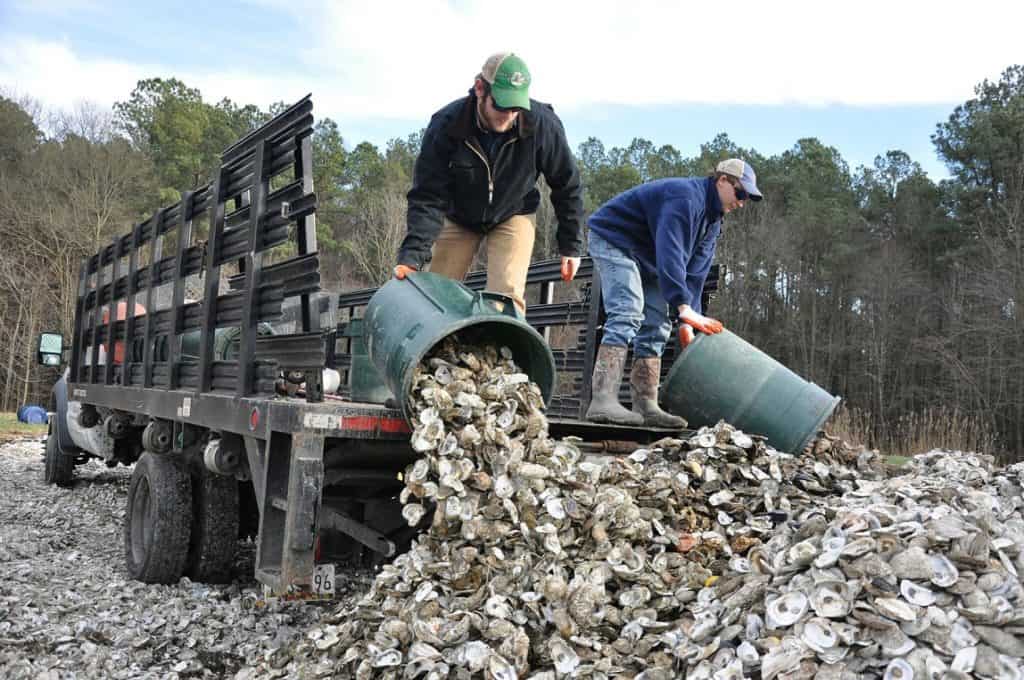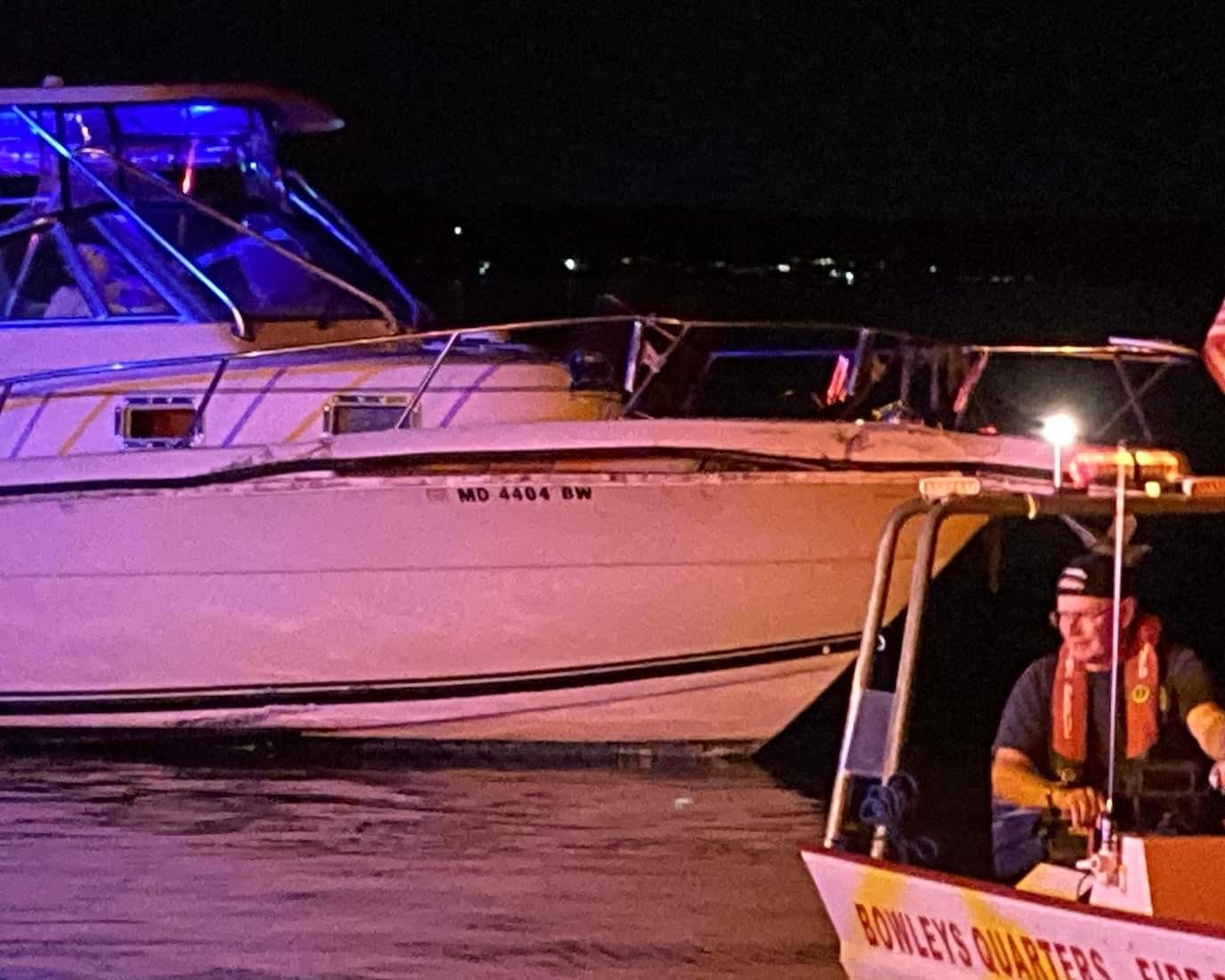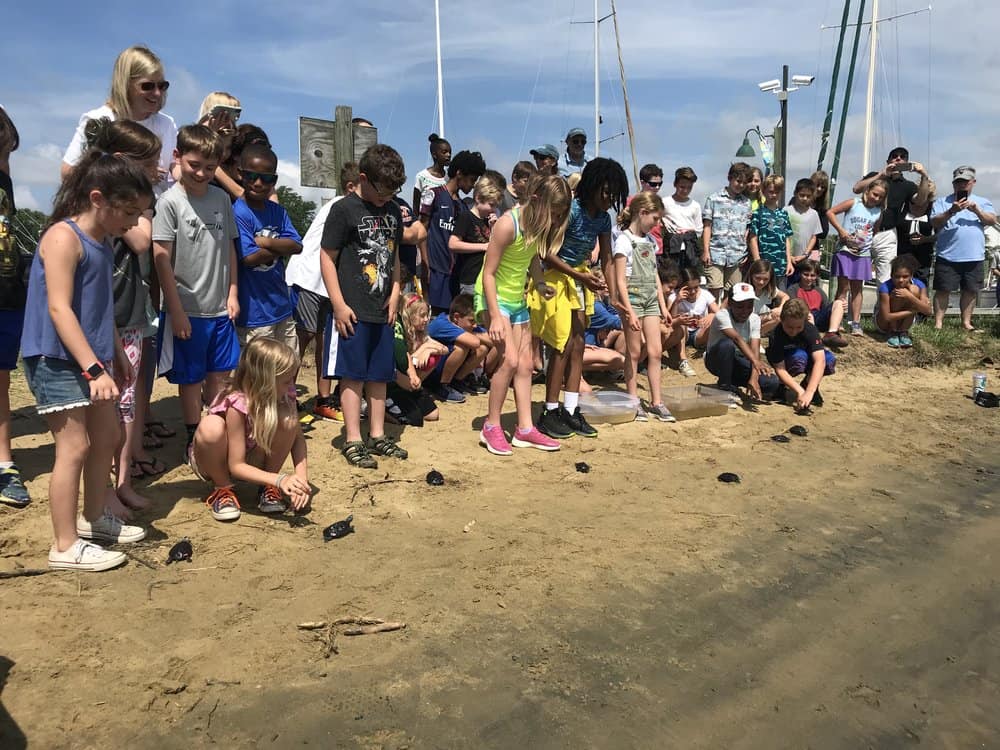Oyster shells may get swept up with the garbage at the end of a holiday meal, but they’re far more treasure than trash to the Oyster Recovery Partnership (ORP).
The restoration nonprofit goes to great lengths to collect discarded shells from all over the Mid-Atlantic region to use as homes for newly-planted oysters. But their strongest source of recycled shells is restaurants, and with so many of them closed or operating at reduced capacity, ORP is facing a shortage of shell.
As more folks eat oysters at home, ordering direct from oyster growers and wholesalers, ORP is calling on individuals to recycle their shells at its designated public collection sites. There are more than 70 public collection sites throughout the region.
“Oyster shell is the best material for getting young oysters into the Chesapeake Bay, making it the single most important resource to the oyster restoration process,” says Tommy Price, ORP’s Shell Recycling Alliance operations manager. “Right now, we’re experiencing a major shell shortage and we’re calling on the public to help us close that gap.”
ORP’s Shell Recycling Alliance is the largest oyster shell recylcing network in the nation, collecting free of charge from hundreds of seafood businesses. Until this year, their numbers were growing every year. This year, they’ve amassed less than half of average projections—14,000 bushels so far, compared to 31,000 bushels for the same part of 2019.
Natural oyster shells are important for restoration because they are the preferred setting onto which oyster larvae attach themselves and grow. Collected oysters are aged outside for one year, washed, and set with spat at the Horn Point Lab in Cambridge. Every shell can host up to 10 spat, or baby oysters.
In spring and summer, ORP and restoration partners from federal and state agencies to local businesses deploy the spat-covered shells onto protected reefs. The ultimate goal is to encourage the oysters to continue spawning. Oysters filter excess nutrients from the water and their reefs create habitat for a wide range of marine life.
It’s not too late to support the Bay’s oyster industry with purchases for your holiday meals (and then recycle the shells). ORP offers a guide to local oyster buying located here.
“We encourage oyster lovers to come together to support the Chesapeake Bay seafood industry during a time when they need it most,” said Price. “Buy local seafood from markets and restaurants, enjoy oysters at home and recycle your shell. It’s a win–win–win.”
-Meg Walburn Viviano




